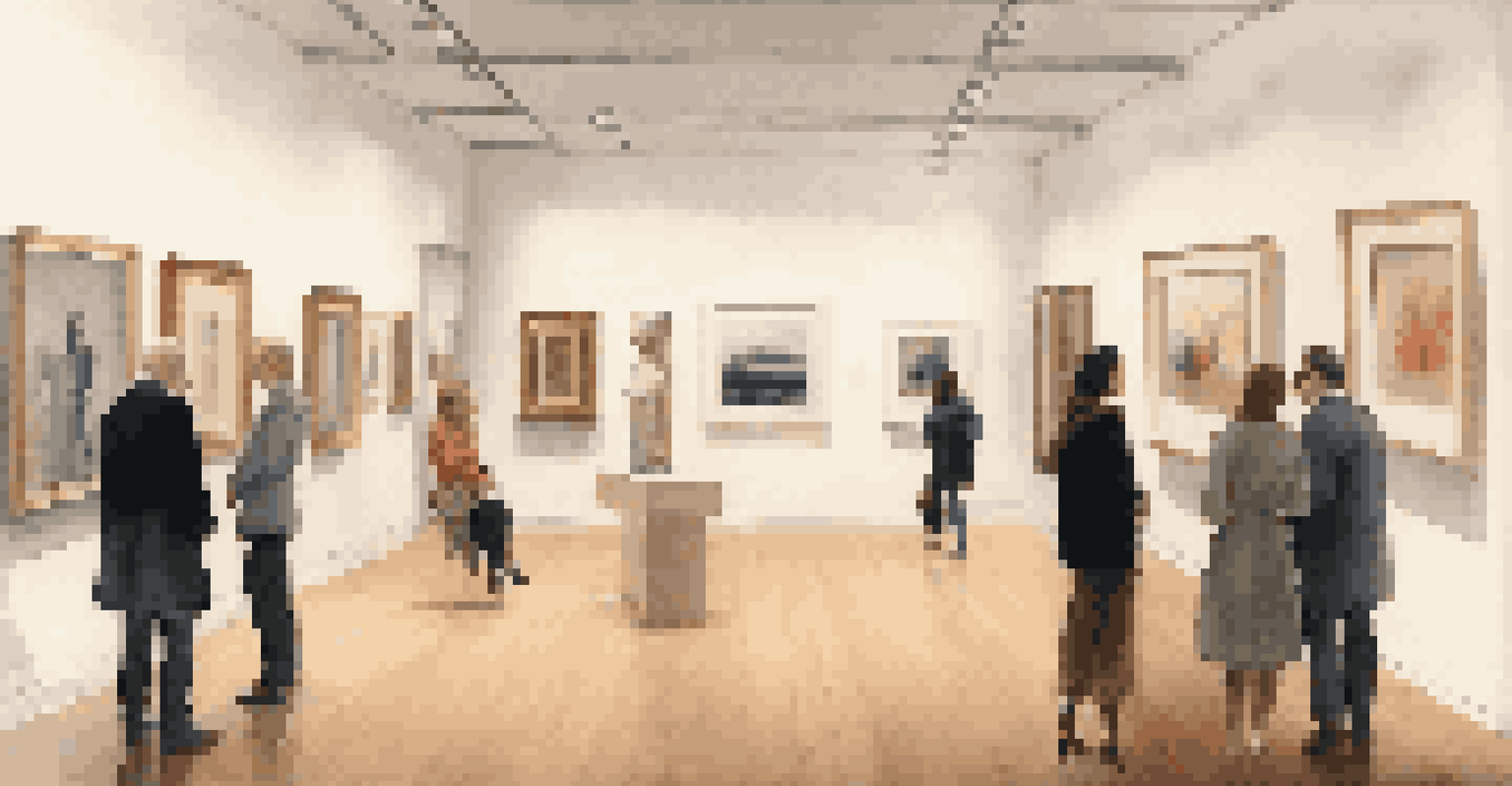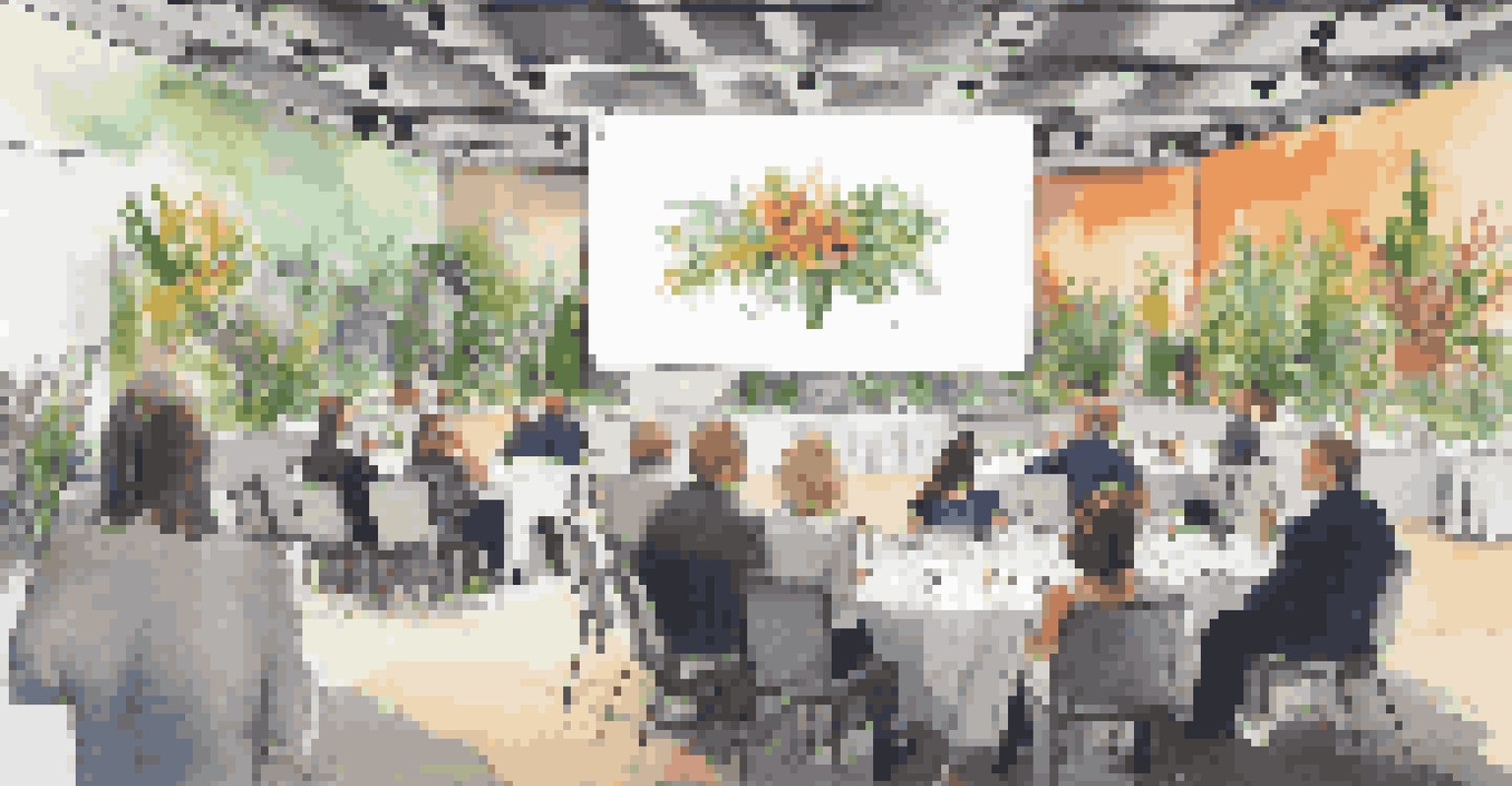Art and Philanthropy: Supporting the Marketplace Through Giving

The Interconnection of Art and Philanthropy
Art and philanthropy have always shared a deep bond, with each enriching the other. Philanthropy provides crucial funding that allows artists to create, while art often inspires generosity in return. This relationship is evident in how many artists use their platforms to promote charitable causes, creating a cycle of support and inspiration.
Art is not a thing; it is a way.
For instance, several contemporary artists have launched initiatives that not only showcase their work but also benefit communities in need. These projects demonstrate how art can be a powerful tool for change and social impact. By intertwining creativity with philanthropy, artists can advocate for important issues, making their work resonate on a deeper level.
Ultimately, this symbiotic relationship highlights the importance of supporting the arts through charitable giving. When individuals and organizations invest in artistic endeavors, they are also investing in the cultural fabric of society, ensuring that diverse voices and stories continue to be heard.
The Role of Donors in the Art World
Donors play a pivotal role in sustaining the art world, often stepping in to fill gaps left by public funding. Through donations, they can support everything from gallery exhibitions to public art installations. This financial backing is essential for artists who may struggle to make a living solely from their work.

Many donors are not just passive contributors; they actively engage with artists and arts organizations to understand their needs. This relationship can lead to meaningful collaborations that benefit both parties, creating a vibrant ecosystem where art can thrive. By fostering these connections, donors help to cultivate a rich artistic landscape.
Art Fuels Philanthropic Support
Art and philanthropy are interconnected, with each enriching the other through support and inspiration.
Moreover, philanthropic initiatives often target underrepresented artists, providing them with opportunities that might otherwise be inaccessible. This targeted support not only diversifies the art world but also enriches it, allowing for a broader range of perspectives and stories to emerge.
Community Impact Through Art Initiatives
Art initiatives funded by philanthropy can have a profound impact on local communities. By supporting public art projects, donors help transform spaces, making them more inviting and culturally rich. These projects often engage local residents, fostering a sense of pride and ownership in their surroundings.
Philanthropy is not about the money. It’s about the difference you make in people’s lives.
For example, murals in urban neighborhoods can beautify the environment while also telling the stories of the community. Such projects not only enhance visual appeal but also encourage conversations around identity and history. This interaction can strengthen community bonds and inspire further artistic endeavors.
Additionally, philanthropic support for arts education programs ensures that creativity is accessible to everyone, especially young people. These programs can empower the next generation of artists, providing them with the skills and confidence to express themselves and pursue their passions.
Corporate Philanthropy in the Arts
Corporate philanthropy has become an increasingly important source of funding for the arts. Many companies recognize the value of supporting cultural initiatives as a way to enhance their brand image and engage with the community. This investment not only benefits the arts but also fosters goodwill among customers and employees alike.
Sponsorships for art exhibitions, performances, and festivals can provide companies with valuable visibility while also enabling them to contribute positively to society. For instance, a tech company may sponsor a local art fair, showcasing artists’ work while aligning their brand with innovation and creativity. This mutual benefit is a win-win situation.
Donors Enhance Artistic Opportunities
Donors play a crucial role in sustaining the art world by filling funding gaps and supporting underrepresented artists.
Furthermore, corporate partnerships can lead to innovative projects that merge art with technology, resulting in unique experiences for audiences. By collaborating with the arts, businesses can tap into new markets and inspire creativity within their own teams.
The Evolution of Art Grants and Funding
Art grants and funding opportunities have evolved significantly over the years, with many organizations now focusing on inclusivity and diversity. These grants aim to support a wide range of artistic practices and backgrounds, ensuring that all voices can be heard. This shift reflects a growing recognition of the importance of representation in the arts.
For example, many grant programs now prioritize projects that address social issues and engage underrepresented communities. This focus not only enriches the art world but also fosters dialogue around important topics. Artists are empowered to create work that reflects their experiences and challenges societal norms.
As the landscape of art funding continues to change, there is a greater emphasis on collaboration and community involvement. Grantmakers are increasingly looking for projects that involve multiple stakeholders, creating a sense of shared responsibility and investment in the arts.
Challenges Facing Art Philanthropy Today
Despite the positive impact of philanthropy on the arts, several challenges persist. Economic downturns can lead to reduced funding for cultural initiatives, forcing many organizations to make difficult decisions. This uncertainty can stifle creativity and hinder the growth of artistic communities.
Additionally, the competitive nature of grant applications can be daunting for many artists and organizations. The process often requires extensive documentation and clear articulation of goals, which can be challenging for those who may not have access to resources or support. This can inadvertently exclude talented individuals from receiving the funding they need.
Community Benefits from Art Initiatives
Philanthropic support for art projects transforms communities, fostering pride and creative expression among residents.
Moreover, as the landscape shifts with changing philanthropic priorities, artists and arts organizations must adapt to remain relevant. This requires them to be strategic in their approach, seeking out diverse funding sources and building relationships with a broader range of donors.
The Future of Art and Philanthropy
Looking ahead, the future of art and philanthropy is full of potential, particularly as societal values continue to evolve. There is a growing recognition of the role that art plays in promoting social change, which may lead to increased support for innovative projects. This shift could open doors for new artistic expressions and collaborations.
Additionally, the rise of digital platforms presents exciting opportunities for artists to connect with donors and audiences alike. Crowdfunding, online auctions, and virtual exhibitions are just a few ways that technology is reshaping how art is funded and appreciated. This democratization of art funding can empower artists to reach a wider audience.

Ultimately, the future will depend on the commitment of both individuals and organizations to invest in the arts. By fostering a culture of giving and support, we can ensure that creativity continues to flourish, enriching our society and inspiring generations to come.